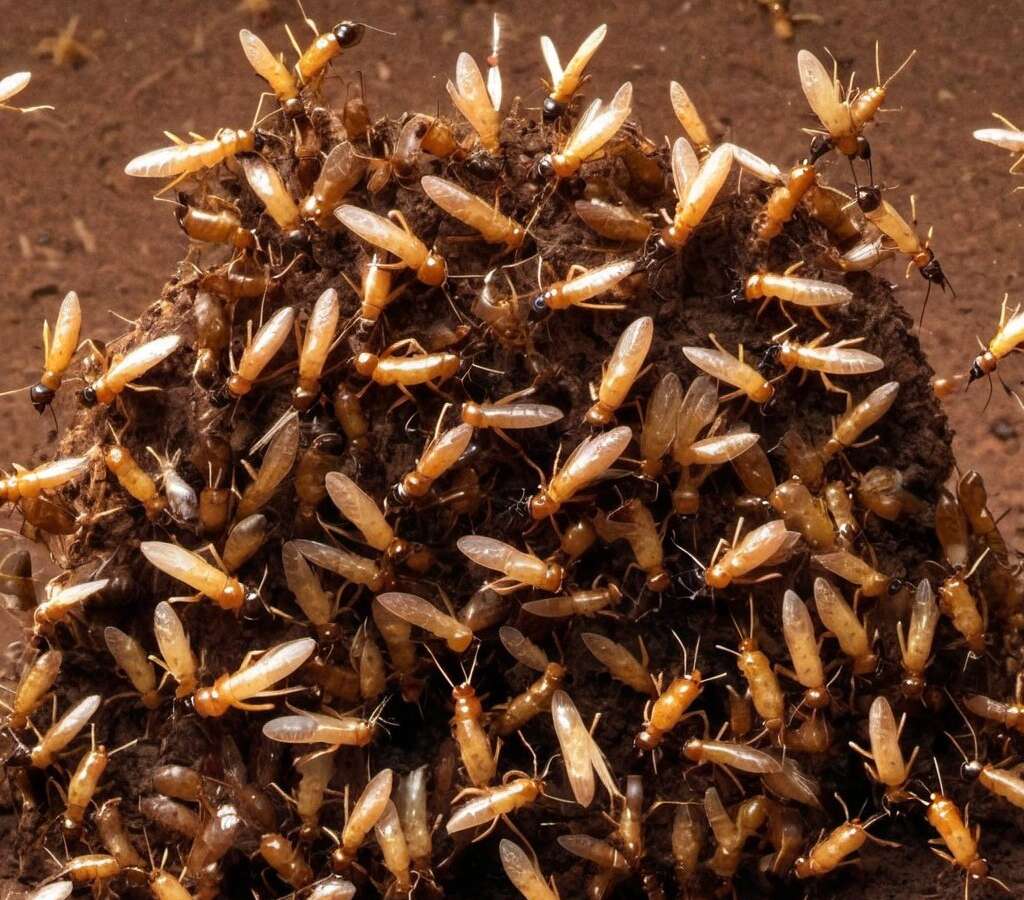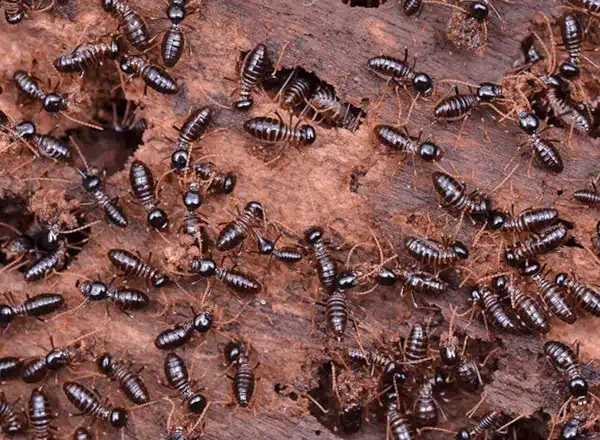Outside of taxes, our homes are the most expensive investment that we will put our money into. Buildings for businesses and other such buildings are also expensive. Because of this we need to protect these investments from anything that would come and try to damage them. One of the major pests that damage buildings such as homes of businesses are termites. Termites are wood destroying insects that are very common here in Oklahoma. In this article let’s explore termites, the termites lifecycle and ways that we can protect our homes and businesses from their destructive power.
WOOD EATING TERMITES
Termites destroy wood by consuming them. These small creatures have an enzyme in their stomach that allows them to break down the cellulose in wood and create energy from it. Wood contains two major ingredients. These two ingredients are cellulose and lignin. Cellulose is abundant in wood, and lignin makes up the outside parts of the cell to give the word structure. In the gut of the termite, an enzyme is found that will break down cellulose and create energy out of it. This unique biome gives termites the ability to feed on wood and other plant life in order to use it for food. In order for these insects to keep this gut flora in their lineage, adults termites will feed the young their droppings. This passes the gut biome from adults to child.
TERMITES IN COLONIES
Termite are eusocial insects. They live in a colony and separate the work out by caste. The caste system starts with the reproductives. The queen lays all of the eggs for the colony. She doesn’t sleep. She lays eggs day and night. The average eastern subterranean termite colony can have individuals numbering into the millions. Because of this, she is constantly laying eggs. In addition to the queen, swarmers must be born. These flying termites are unique in the fact that they are much more resilient in the outside air. They are tasked with creating new colonies. Call a Tulsa exterminator for more help.
In the month of April and May, the swarmers will leave the colony to find a swarm of other reproductive termites. Once a male and female have found each other, they will mate in mid air, find a place to start their colony and land, lose their wings and begin to dig out the Royal chamber. This chamber will be the new colony. Immediately the female will start laying eggs and the king will begin to tend to the eggs. Once the eggs hatch and become full grown, then they will become workers and the king will no longer be needed. He will die off.
SOLDIERS AND WORKERS
Next we have the soldier termites. These termites are equipped large heads and large mandibles that they can use to protect themselves and the colony. When the colony is attacked, these insects will come to life and go to wherever the damage is being done. As they fight off the intruders, the workers will close off the tunnel behind them, trapping them with their attackers. They will give their life for the colony. Your Broken Arrow exterminator will have more information.
Lastly the worker cast are the largest number of the casts. These insects will forage for food, take out the trash, feed the young, build mud tubes and much more. These insects do all of the menial task at a taste for the colony to do what it needs to do. One of the major roles of these insects is to create the mud tubes to go above ground. The eastern subterranean termite is very susceptible to drying out. It needs humid air in order to survive. Underground, the air is human enough for these insects to thrive. But if they go above ground, only the swarmers are hardy enough to survive.
So in order to forage for food and bring it back down from above ground, these insects must build mud tubes up the side of buildings and trees in order to survive above ground. This brings the humid air from underground up above in a way that they can use and still perform the duties that are necessary. One of the telltale signs of having termites in your home are these mud tubes. If you’re seeing them crawl from the ground up the side of a wall in your home, then you may have an issue. It’s time to call your Broken Arrow pest control company.
ANTS VS TERMITES
Often people confuse ants and termites. If you’re seeing flying insects in the windows of your home and are uncertain if those are swarming termites or ants, then it’s a good idea to take a closer look at them. The ant has three distinct body sections. Each of the sections has a small waist between them. The termite has a body that is one width for its entire length. Also the wings of a termite are much longer than its body. The wings of a flying ant are the same length as its body. These kind of signs can help you to understand if you’re dealing with ants or termites.
Also ants develop with a complete metamorphosis, which includes the egg, larva, pupa or cocooned version and then the adults. The termite on the other hand uses incomplete metamorphosis. This means that once the egg is laid by the queen, it will hatch as a nymph. This nymph is a smaller version of the adult termite. It will grow and molt or shed its exoskeleton a number of times before it becomes a full grown adult. It is never in a larva stage nor is it in any form of cocoon.
DEALING WITH THESE INSECTS
If you think you’re dealing with termites or any other pests, then its time to call in a Tulsa pest control company. Here at TermMax Pest Control, we are the best in the business when it comes to dealing with termites or any other pests that are playing your home. We service the greater Tulsa area including Coweta, Claremore, Broken Arrow, Catoosa, Prattville, Sand Springs, Sapulpa, Jenks, Bixby, Owasso, Turley and much more. Call us today for a free estimate. We’re here to help!



